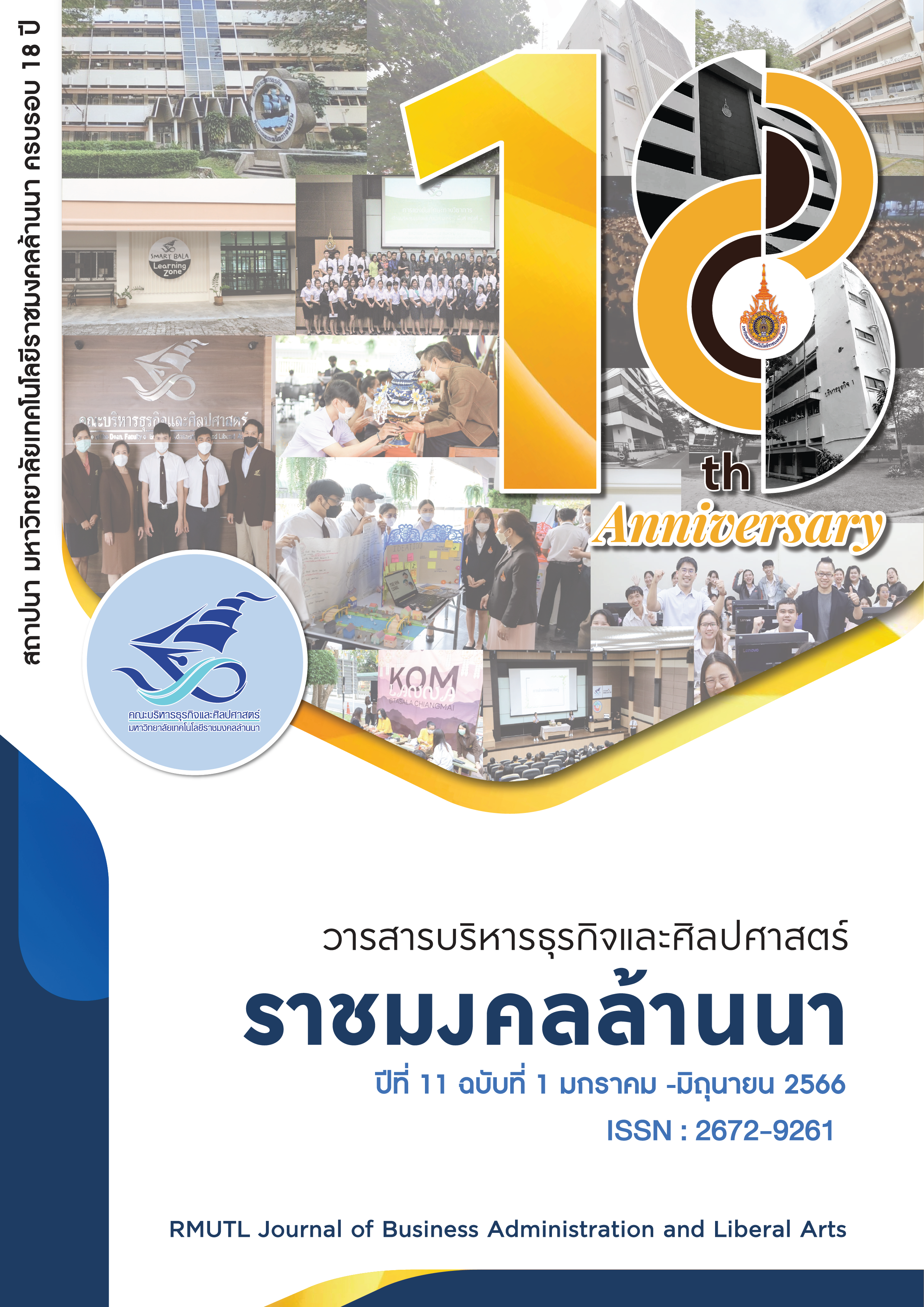King Rama IX’s Best Novels with The Concepts of The King’s Philosophy: The Analysis of The Presentation Strategies of Concepts and The Use of The Language of Imagery
Main Article Content
Abstract
This present research aimed at studying the presentation strategies of the King’s Philosophy and the use of imagery in the literature written during the reign of His Majesty King Bhumibol Adulyadej The Great. The data was collected from the 9 excellent novels of the reign of King Rama IX which presented the King’s Philosophy. The selected novels included The Great Field, Red Bamboo, Mr. Lee and Miss Ma, His Name is Kan, The Northeastern Boy, There is still pleasure in this place, That woman is Boonrod, The Throne Made of Leaves, and Bang-Ka-Pong. There were 3 types of concepts followed the King’s Philosophy: Soil resources management concept, water resources management concept, and forest resources management concept. All of which were presented through setting, character, conversation and description.
According to the results of the study, it was found that there were 4 types of the presentation strategies used in portraying the King’s Philosophy as follows: 1) the presentation strategies used in presenting the King’s philosophy through setting or place, 2) the presentation strategies used in presenting the King’s philosophy through characters, 3) the presentation strategies used in presenting the King’s philosophy through conversations of the characters, 4) the presentation strategies used in presenting the King’s philosophy through the description. Regarding the art of using imagery, it was indicated there were 5 types of imagery employed in the selected novels which were the art of using auditory imagery, visual imagery, olfactory imagery, gustatory imagery and tactile imagery.
Article Details

This work is licensed under a Creative Commons Attribution-NonCommercial-NoDerivatives 4.0 International License.
บทความวิจัยนี้เป็นของลิขสิทธิ์
References
กรมศิลปากร. (2562). วรรณกรรมยอดเยี่ยมในสมัยรัชกาลที่ 9 ตามแนวคิดศาสตร์พระราชา. กรุงเทพฯ: แพคเพลส.
กันยารัตน์ รินศรี. (2562). ศาสตร์พระราชากับการประกอบอาชีพ ในยุคประเทศไทย 4.0. วารสารธรรมวิชญ์, 2(2), 257-268.
กาญจนา นาคนันทน์ [นามแฝง]. (2508). ผู้ใหญ่ลีกับนางมา. กรุงเทพฯ: แพร่พิทยา.
คำพูน บุญทวี. (2519). ลูกอีสาน. กรุงเทพฯ: บรรณกิจ.
ดวงมน จิตร์จํานงค์. (2536). สุนทรียภาพในภาษาไทย. (พิมพ์ครั้งที่ 2). กรุงเทพฯ: เคล็ดไทย
โบตั๋น [นามแฝง]. (2524). ผู้หญิงคนนั้นชื่อบุญรอด. กรุงเทพฯ: ชมรมเด็ก.
พอเพียง. (2564). โครงการแกล้งดิน.สืบค้น 29 กันยายน 2565, จาก https://www.porpeang.org/content/4960/
ม.ร.ว.คึกฤทธิ์ ปราโมช. (2498). ไผ่แดง. กรุงเทพฯ: ชัยฤทธิ์.
มติชน. (2559). พระราชดำรัส ร.9 ‘ควรจะปลูกต้นไม้ในใจคนเสียก่อน แล้วคนเหล่านั้นจะพากันปลูกต้นไม้ลงบนแผ่นดิน’. สืบค้น 1 ตุลาคม 2565, จาก https://www.matichon.co.th/court-news/news_ 390136.
มหาวิทยาลัยธรรมศาสตร์. (2542). พระบาทสมเด็จพระเจ้าอยู่หัวกับแนวคิดและทฤษฎีการพัฒนาอันเนื่องมาจากพระราชดำริ. โดมทัศน์, 20(1), 22-32.
มาลัย ชูพินิจ. (2497). ทุ่งมหาราช. กรุงเทพฯ: บรรณกิจ.
มูลนิธิชัยพัฒนา. (2539). ทฤษฎีใหม่. สืบค้น 8 พฤศจิกายน 2565, จาก https://www.chaipat.or.th/concept-and-theory-development/new-theory.html.
วินทร์ เลียววาริณ. (2550). บางกะโพ้ง. กรุงเทพฯ: อัมรินทร์บ๊คเซ็นเตอร์.
สยามรัฐออนไลน์. (2559). “น้ำคือชีวิต”พระราชดำริรัชกาลที่ 9 ที่เกิดประโยชน์สุขอประชาชนอย่างยั่งยืน(1). สืบค้น 2 ตุลาคม 2565, จาก https://siamrath.co.th/n/6774.
สิทธา พินิจภูวดล. (2516). การเขียน. (พิมพ์ครั้งที่ 3). กรุงเทพฯ: คณะมนุษยศาสตร์ มหาวิทยาลัยรามคำแหง.
สุธาทิพย์ แหงบุญ. (2559). ภาษาจินตภาพใน นวนิยายเรื่องเลือมสลับลาย: การใช้คำแสดงอารมณ์ความรู้สึก. สักทอง, 22(3), 31–42.
อิงอร สุพันธุ์วณิช. (2547). วรรณกรรมวิจารณ์. กรุงเทพฯ: แอคทิฟ พริ้นท์.

